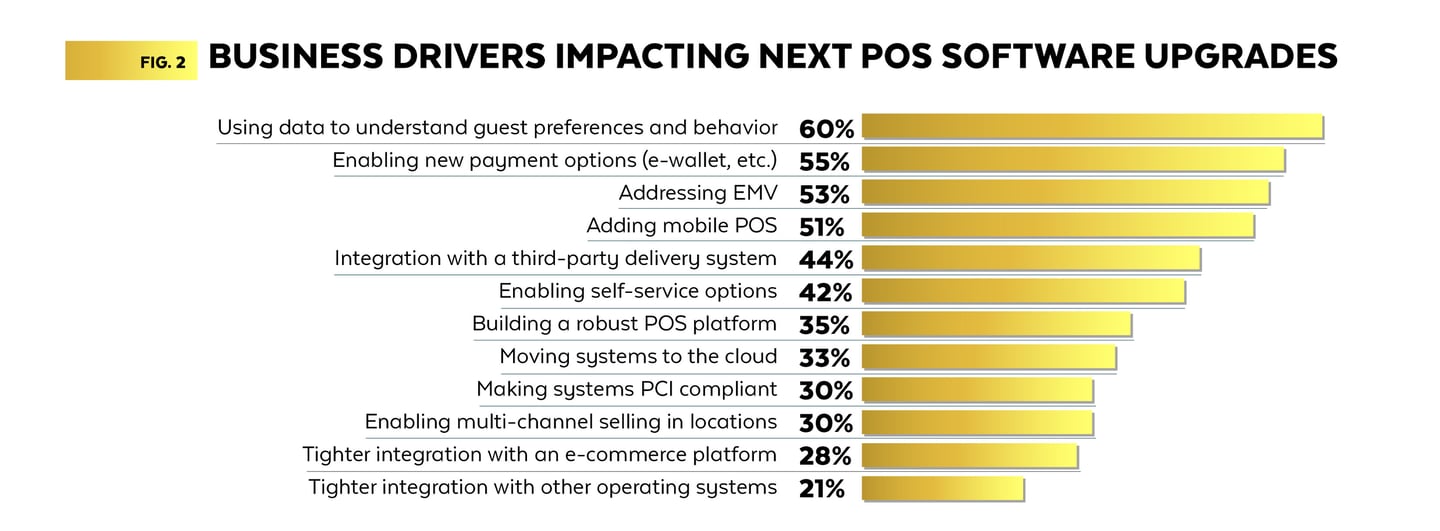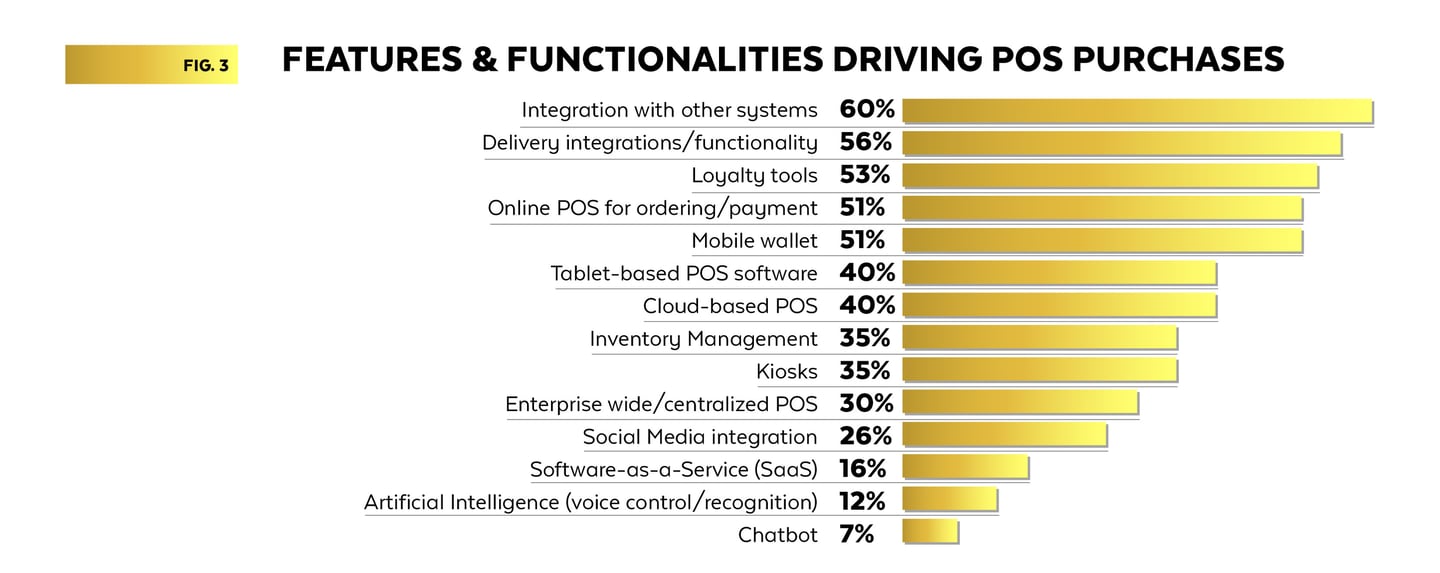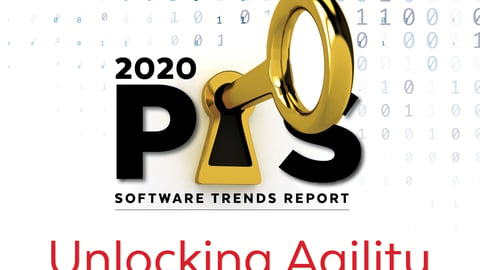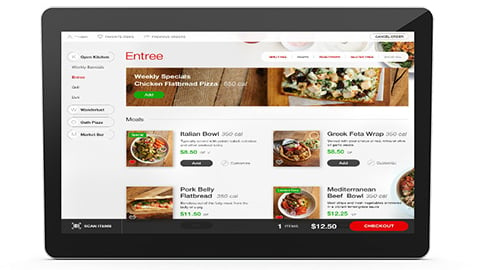2020 POS Software Trends Report: Unlocking Agility
The point of sale for restaurants is becoming a fluid concept, as technology no longer needs to be tethered to a counter or a static workstation. This in itself is not a new trend — mobile POS investments have remained a top driver influencing software spend, a development HT has tracked in this annual report. It is worth noting that restaurant transactions are in a state of flux. Orders are increasingly shifting to online or digital channels, and the draw of third-party delivery platforms is moving the POS farther afield.
Suppliers have been along for this ride and have spent considerable effort to add integrations and features to help restaurants successfully and profitably address these issues. With all there is for restaurants to unpack in terms of feature sets and functionalities, restaurant operators in this year’s POS Software Trends survey report they are not looking for new POS vendors. Only 12% of restaurants say they plan to change POS suppliers in 2020 (Fig. 1) compared to 29% in 2019 and the number of restaurant operators that claim to be testing the waters for new POS solutions also saw a precipitous dip, falling from 51% in 2019 to 23% in 2020. This does not mean that POS suppliers are off the proverbial hook, as operators admit they will be looking for more features and functionalities from existing systems. The majority of restaurants (65%) plan to expand upon feature sets of current POS software.
The flexibility of POS systems will be key for restaurants to deliver on the demands of today’s diners and business needs. When asked to identify key business drivers that will influence software upgrades, being able to unlock and leverage insights from the point of sale reign at the top of the list (Fig. 2). Data will rule in POS buys as restaurants still put pressure and set expectations that the POS act as the funnel through which to filter guest data. As third-party aggregator sites have been chipping away at restaurants’ ownership of guest information, data will be an even greater commodity.
Once restaurants have mastery of guest data they will be better able to offer the appropriate service options and channels for diners. This emerges in a tier of secondary focus areas for operators with restaurants seeking POS solutions that will provide a variety of convenient ways for restaurants to interact with guests at the point of sale. Chief among these: enabling new payment options (56%), adding mobile POS (53%), integrations with third-party delivery (44%) and enabling self-service options (42%). For these areas to deliver anticipated business returns, an open architecture will be a necessity. Restaurant operators are seeking partners that can deliver in a myriad of areas and will engage multiple vendors to create the ecosystem they desire. As technology stacks become more complex, the POS will be a constant and therefore will need to be as flexible and open as possible to deliver timely, actionable information into the hands of the appropriate team members.
Delivery is driving POS investment in 2020, with more than half (56%) of restaurants claiming integrations with delivery providers is a key feature influencing purchases (Fig. 3). Online ordering and payment jockeyed into the fourth spot (51%) after loyalty tools (53%). The top five functionalities depict the evolution of the point of sale to be driven by customer preference. As this shift continues, loyalty tools and robust integrations will be increasingly important for restaurants to best serve and market to existing guests while expanding their customer base.
What’s Happening on the Tech Supplier Side
Compiled by: Michal Christine Escobar, Senior Editor - Hotels & Anna Wolfe, Senior Editor – Restaurants
Aireus (www.aireus.com) made updates to its cross-platform mobile ordering app that allows restaurants to offer both Apple and Android users an app from which to order food. The app also allows operators to change their menu ‘on-the-fly’ and can be customized for different brands. Innovative Features: Aireus offers an enterprise ecosystem that includes kiosks, mobile ordering, online ordering and Apple TV ordering; mobile iPod touch ordering, as well as alerts and notifications for managers. In 2020, Aireus plans to offer cabana and pool seat reservations for hotels and resorts, cross platform KDS for multiple devices, and fast mobile iPod touch ordering.
Agilysys (www.agilysys.com) added guest location technology to rGuest Buy OnDemand allowing guests to view location aware menus and have food delivered to their location when they want it. Agilysys also added more mobile device options for convertible tablet bases to blur the lines between fixed terminals and mobile use. In 2020, Agilysys sees an acceleration of POS mobility and guest self-service options with new use cases for kiosks, web-based apps and location independent ordering. The company plans for InfoGenesis POS to drive innovations in global multi-site enterprise POS management and performance analysis. Combined with rGuest Seat, operators will receive real-time access to floor management and guest profile information. These advanced POS solutions will enable servers to become brand ambassadors and service orchestrators rather than traditional order managers.
Appetize (https://appetizeapp.com) introduced self-service ordering options including Interact Kiosk and Interact Web, as well as integrations with Olo, Punchh and SynergySuite. Innovative Features: Appetize can withstand faulty connectivity with its auto-offline mode, ensuring continued and accurate operations. It also offers centralized management tools such as pushing menu and price changes, and real-time reporting and analytics. In 2020, Appetize will work on continual UI improvements and integrating AI into the analytics and reporting platform to provide big data insights and help improve operational efficiencies.
Givex (www.givex.com) added conversational ordering and related online ordering capabilities, and launched Givex Go, an application that allows managers to keep track of their business even when they’re on the go. Innovative Features: Givex POS is fully integrated with its iDS that allows for standardized food preparation, ensuring that the food served is consistent no matter who’s in the kitchen. This hybrid system ensures clients do not lose time or business from a momentary loss of connection to the cloud. In 2020, Givex will develop a large format ordering/complex choices feature that supports restaurants with more customization options. This will enable operators to quickly scan through many menu options, modifiers, and customizations to take complex orders quickly and easily.
Lavu (https://lavu.com) released LavuPay, a fully integrated internal payment processing platform that provides fast and secure processing, and it released Lavu 4 that features a fully redesigned app and control panel. Innovative Features: Offline mode ensures full functionality at all times. In 2020, the wireless offline mode will be able to support up to 50 devices. Each device will form a chain-link with the next device to create a virtual set of Wi-Fi access points.
Lightspeed (www.lightspeedhq.com) expanded Lightspeed Loyalty, its fully integrated loyalty program that gives retailers and restaurants the ability to create a personalized dialogue with customers from a single platform. In May 2019, Lightspeed acquired Chronogolf, a cloud-based software for golf course management. Owners can integrate their golf course POS with their restaurant POS to streamline revenue, drive growth and maximize efficiency. Innovative Features: Lightspeed offers a self-order menu that can be used by waiters at tables or on a kiosk. Kitchen display shows ticket times to keep track of turnaround, color codes the orders to help staff see what’s cooking and what’s ready to go, and lets staff manage incoming orders more effectively. Plus, a customer-facing display lets guests see the full breakdown of orders.
Harbortouch (www.harbortouch.com) evolved its bar and restaurant software and re-invented its online POS management solution and Lighthouse Business Management system. Innovative Features: Harbortouch’s Lighthouse Business Management System includes tools for social media, customer engagement, loyalty and online reputation. Merchants can link their social media profiles to schedule posts, track performance of content, and manage social media accounts in one place. They can also view ratings and reviews from multiple online review platforms and respond to customers to improve online reputation.
Infor (www.infor.com) made enhancements to meal plan transaction types in foodservice concepts allowing for greater range of split tenders and accounting for applicable taxes automatically. Infor acquired Reserve Interactive, which will integrate Infor’s POS with end-to-end sales and catering and table management solutions. Innovative Features: Infor’s cloud architecture leverages Amazon Web Services and Infor’s own Cloud OS allowing customers to grow without unnecessary expense. Infor’s dual use POS terminals can function as both a standard cashier station and as a customer-facing self-order kiosk. Infor POS API supports menu creation via API so that menu items can be maintained from third-party applications, making it easier and less time-consuming to update menus. In 2020, Infor will deepen its focus on improving the user experience for staff and guests. The company will release a new version of its Item Harmony product that manages POS menu building, and will integrate more deeply with Birst, the company’s data analytics and visualization solution.
NCR (www.ncr.com) offered more third-party delivery provider integrations to the POS, added kitchen assembly line technology to help kitchens establish a second make line in the back-of-house that can be solely devoted to fulfilling off-premise orders, and gave operators access to additional real-time data from the kitchen so that they can have immediate visibility into operations to better manage them. Innovative Features: Easy-to-use conversational ordering capabilities that lead staff through the ordering process and help them to suggest upsells, real-time mobile cloud reporting, alerts and analytics, and a hands-on training mode that reduces training time. In addition, integration between NCR Aloha POS and kitchen production solutions ensure that off-premise orders are sent directly to the POS, held in queue based on the customer’s pickup time, and then automatically routed to the exact stations so that the food is freshly prepared for the guest’s arrival. In 2020, NCR will provide operators more choice in how they implement the POS within the restaurant, will give staff a more consistent and straightforward user experience, enable more powerful third-party integrations through expanded APIs, and will enhance the ordering and payment experience for guests at the table.
Omnico (https://omnicogroup.com) integrated smart ticketing technology to unify the journey from the point-of-sale to ticketing and booking, creating a unified customer experience. Brands have complete control over ticket time slots, ticket types, capacity, coupons and discount codes, seat maps, language and more. It also enabled pay-at-the-table functionality. Innovative Features: Omnico allows restaurants to analyze transaction data and extract real-time insights into customer behavior that provides opportunities for real-time personalized engagement and upselling. It also gives diners flexibility in how to order and pay, and it interfaces with loyalty programs whether they are on or off the premises. In 2020, Omnico will integrate artificial intelligence with the POS to give restaurant and hotel operators faster and more accurate access to business insights from transaction and behavioral data.
Vendor Predictions
The omni-channel approach to ordering will gain momentum with the boom of delivery, mobile kiosks and voice assistants. POS systems will be required to seamlessly integrate with all essential third-party vendors if they want to become the operational hubs of food service businesses. ‘Integration for all’ will be the motto of 2020.
— Poster
Speed, reliability and efficiency are the three most important things and those will be the features that impact success in the industry because they matter the most to customers. The field of competitors continues to grow, and anyone who wants to stand out will need to have nailed down these fundamentals by 2020.
— Lavu
Expect a market adjustment in two major segments: online food delivery services and independent payment processors that are not fully integrated with a POS. While convenient, restaurant operators are feeling the impact of these services to their bottom line. They are demanding more transparency on the pricing structures, and are unhappy about how much they are costing once all the fees are calculated. This opens the door for greater POS software integration that results in more efficient and less costly availability of these services.
— TouchBistro
Right now there is a drive to integrate the POS into operators’ full range of systems. But the greater long-term impact will come from the integration of POS into AI networks, recognizing orders made using voice-activation both at home and on-location with loyalty points, discounts, vouchers and offers personalized to achieve maximum effect.
— Omnico
As new and unique challenges and customer demands realize, innovative technology solutions will need to be deployed with scalability and agility. Personalization and Operational Efficiency in areas such as the kiosk and the drive-thru will be answered by technology with Artificial Intelligence and analytics to increase revenue, decrease delivery time and optimize the customer experience. As industry needs continue to evolve with more complex problems, operators will look to technology to deploy simple and elegant solutions.
— PAR
As consumer demographics change, the rise of Gen Z for example, restaurants will need to adjust to another shift in expectations, preferences and order behaviors which might include capitalizing on AR and VR technology and further streamlining the drive-thru experience to serve guests even faster.
— NCR
Oracle Food and Beverage (https://www.oracle.com/industries/food-beverage) expanded its mobile POS capabilities and added new conversational ordering features, as well as more than 12 new kitchen display features. It also can manage and prioritize orders coming from multiple channels including mobile apps such GrubHub and Doordash as well as POS devices, self-service kiosks and online orders. Innovative Features: Simphony is an all-in-one restaurant management software and hardware platform that features robust front-of-house, back-office, and kitchen management features. Simphony’s feature set includes: Access to real-time data for restaurant reporting, loyalty tools, tableside ordering and staff enablement with mobile POS. Plus, Simphony helps global restaurants maximize business potential via a global transaction platform and open integrations that enable customers to integrate Simphony with any solution. In 2020, Oracle plans to streamline the solution stack from the POS client hardware through to cloud infrastructure to create a seamless customer experience that does not require third-party technology. This effort will allow simplified development and support for Simphony and will streamline all orders through the global transaction platform.
PAR Brink POS (www.partech.com) announced the release of Version 5.0 in 2019. With this release, Brink POS invested in capabilities that enhance end users experience and customers operational efficiencies with an introduction of a number of technology refreshes. PAR is excited to announce that we added 27 new Brink POS Integration Partners, now offering the largest integration ecosystem in the industry. PAR also announced the launch of Brink POS for Cloud Kitchens – a solution designed specifically to operate Cloud/Ghost Kitchens by seamlessly receiving and integrating orders from all major ordering channels. This solution helps operators by consolidating orders into a unified workflow with support for multiple assembly lines and management of multiple brands within a single facility. Innovative Features: The PAR Brink POS Solution is a truly scalable product, successfully installed in single unit operators as well as in concepts with thousands of locations, due in large part to the openness of the product. In 2020, PAR will announce the availability of PAR Payment Services, a merchant services offering. PAR Payment Services is designed to serve the various ways customers want to pay in a secure, fast and reliable manner.
PCMS (www.pcmsdatafit.com) expanded its capabilities for food service with an increased set of fully integrated EMV partners in North America and Europe, increased its functional capability, added cross-platform functionalities, improved its personalized offer platform to include voucher generation/management capabilities, social media integrations, and discounting options, and added time-based menus, wet-stock management, and online table booking. Innovative Features: Cloud hosting, dashboard reporting, mobile POS, managed services, personalized offers and a resiliency to run offline. In 2020, PCMS will deploy its POS software into Google Cloud and Microsoft Azure.
Posera (www.posera.com) revamped its Maitre’D POS and back-end user interfaces to feature a contemporary design that optimizes screen real estate with an emphasis on sleeker aesthetics and personalized menu images, allowing for more efficient user navigation. It also added interactive maps for its delivery module and per-guest detailed table order itemization for faster, error-free payment reconciliations. Innovative Features: Posera offers cloud reporting for comprehensive enterprise management with DataBoard Advanced Reporting. In 2020, Posera’s focus will be on expanding its Maitre’D POS cloud functionalities, increasing its mobile capabilities, and enhancing its kitchen display system.
Poster (www.joinposter.com) integrated with food delivery company UberEats to eliminate the need for third-party delivery tablets, partnered with Cloudbeds (property management software) to allow hotel managers to keep track of what their guests buy at their hotel restaurants and bars, developed an integration with online accounting software Xero, and began accepting payments with mPOS provider SumUp. The solution now includes consolidated reports for the whole chain, menu management and customer database synchronization. It also added custom payment methods that help reflect alternative income sources such as third-party delivery orders or certificates. Innovative Features: With its innovative UX/UI design, employees do not require any special training and can start selling in minutes. Poster Boss, an all-in-one mobile app for owners and managers with sales, receipts, inventory and alerts, improved loyalty and analytics tools. Kitchen Kit is a solution meant to replace printed tickets in the kitchen. Poster Shop, an automated website creation tool. In 2020, Poster plans to develop AI-forecasting and recommendation tools that predict supply and demand based on the weather and other local information to better plan ahead, and to create alerts if the system detects any irregularities, such as missing stock or funds and allow for more accurate benchmarking. It will also add purchase orders to the system that simplify ordering and it will upgrade its inventory management tool so that restaurants will be able to do partial checks.
Qu (www.qubeyond.com) developed an enterprise size and scale, omni-channel commerce platform specifically for fast casual and QSR chains, leveraging its core data model across all order channels to deliver a seamless management and order acceptance solution with clean data coming in and actionable data coming out. Innovative Features: omni-channel powered data model, infinite depth inheritance powered enterprise management, dynamic store configuration tool, single-item driven context, and responsive reporting engine. In 2020, Qu plans to focus more deeply on helping store managers and owners make unified data-informed decisions in a relevant and timely manner. It will leverage AI and machine learning to help expose tangible actions that will further help store-level decision makers bring in more revenue and reduce variable expenses.
VENDOR PREDICTIONS
Diners increasingly will want the freedom to drive their own table service restaurant experience: ordering and paying from a personal device while seated and serviced at a restaurant. This will lead to significant reduction in tech infrastructure investments and labor costs for operators.
— Silverware POS
We expect labor, food costs and delivery sales to continue to rise. Restaurants that never before considered offering delivery will soon need systems to help them manage their new delivery programs. Existing restaurants offering delivery will deal with increased competition, and look for ways to cut costs and increase efficiency. Restaurants will need to adapt to the expectations of delivery customers, including allowing them to pay securely by credit card upon delivery.
— SpeedLine
Restaurant Manager (www.rmpos.com) deployed a full-release of its cloud-based POS system: Duet and introduced SkyTab — a complete order and pay-at-the-table device for processing EMV, Chip and NFC payments both at the table and at the front door (for delivery orders). Innovative Features: Hybrid-cloud connectivity offered by the company’s Duet software and offline capability for credit card processing when Internet is down. Additionally, when paying on a SkyTab device, diners are prompted to rate their service. If the rating is below a predetermined threshold, management receives a text alert so that they can address unhappy guests and resolve concerns before they leave, preventing negative online reviews. It also features email address capture for future marketing, promotions, loyalty and more. In 2020, Restaurant Manager will add order entry capability to the SkyTab PATT/PATD device making it a comprehensive POS and payments device. It will also offer a new and improved integrated online ordering platform featuring a desktop and mobile user interface.
Revel (https://revelsystems.com) released Revel Enterprise to streamline the performance of multi-location or chain business. Users can set up groups of restaurants, centrally control menus, generate brand-level reports and analyze/manage ingredient inventory. The company also debuted Revel Essentials for restaurants with 20 or fewer locations to help support business operations, customer channels, and payment requirements. Innovative Features: As a PCI-compliant cloud-based system, Revel offers restaurants the opportunity to run their business securely from anywhere and at any time with data available on-the-go. It also offers an always-on mode that enables the POS to run uninterrupted even if the Internet connection goes down. In 2020, Revel will offer vertical-specific solutions for pizzerias, coffee shops and specialty retailers. It will also make its new Concierge Services more widely available to help operators maximize POS platform functionality.
Revention (https://revention.com) focused on third-party integrations for online ordering and loyalty; launched Tablet POS, enabling improved mobility, productivity, and customer experience; and added Nutrition Builder for Revention Online Ordering, Dynamic Code Manager for the Revention Loyalty solution, and DoorDash delivery service integration for Revention delivery dispatch module. Innovative Features: DoorDash integration allows a location to use the DoorDash delivery service to augment in-house delivery staff or to use DoorDash exclusively. The communication with DoorDash is managed directly through the dispatch screen. Revention also integrates directly with Google Maps to facilitate improved routing, track estimated mileage based on the recommended route, and provide comparison reports of actual versus estimated miles to ensure proper compensation. CRM functionality enables customers to track and manage order history and make decisions to drive customer growth. In 2020, Revention will continue to embrace third-party integrations to improve the relationship between POS, online ordering and third-party online ordering providers.
Salido (http://salido.com) rolled out hundreds of updates and feature releases to increase performance, improve user experience and solve operator challenges, including EMV support, PMS and loyalty integrations, offline mode enhanced support, and custom reporting enhancements. Innovative Features: Salido’s intuitive user interface requires almost no training to use and enables lightning fast operation by reducing screen touches. Additionally, the company offers robust reporting, seamless KDS and online ordering workflow, guest experience tools, as well as its integrations across analytics tools, loyalty providers, labor suites and PMS. In 2020, Salido will be laser-focused on improving its core product by growing its engineering, product, design and customer experience teams and working to reduce complexity across configuration, installation and platform management.
Silverware POS Inc. (www.silverwarepos.com) partnered with a leading reservation systems to offer a two-way integration that provides measurable and readily available data of customer spend, guest profile (allergies, preferences, birthdays, etc.) and order history within our native CRM and the reservations system.
Innovative Features: Silverware POS can collect EMV payments from anywhere with its Mobile POS app on Clover Flex devices. It also allows ordering by seat/course, splitting/printing, and payment on a single mobile device with Wi-Fi and 3G capabilities so that waiters can take orders tableside or anywhere guests are across a property. In 2020, Silverware will focus on offering frictionless native payment at the table so guests can review checks and pay via Apple and Google Pay.
SpeedLine Solutions (www.speedlinesolutions.com) made major enhancements to its SpeedDine online ordering platform to help create a more seamless customer experience, announced a branded app offering for restaurants using SpeedDine, and added new features to Pay@ the Door, including compatibility with Android devices. Innovative Features: Extensive delivery functionality, tight integration with online ordering, a mobile-first experience, and loyalty integrations with multiple third-party providers.
Square for Restaurants (https://squareup.com) introduced a new set of order management integrations making it possible for customers to place orders through Postmates, DoorDash and POS solution Chowly directly to a restaurant’s POS. Square for Restaurants now enables off-premise orders such as delivery or takeout requests. It is now integrated with Square Terminal to allow restaurants to access open checks and complete tableside payments. Innovative Features: Square enables integrations with MarketMan for inventory, BentoBox for custom sites, and 7Shifts for scheduling. In 2020, Square will build out first-party products, such as Square Capital, and Payroll, that address foundational issues for restaurants, such as cash flow.
TableSafe (www.tablesafe.com) introduced new analytics that allow operators to optimize the guest experience and better understand customer preference. The company also increased support and integration of POS systems including Aloha, Micros, Squirrel and Focus. Innovative Features: TableSafe is a pay-at-the-table platform designed to be left at the table, giving the guest full control of the payment checkout experience, freeing staff to provide better hospitality. TableSafe offers advanced analytics that provide greater insight for the restaurant merchant. TableSafe’s algorithms are capable of connecting customer preference, selection and satisfaction to an individual server or a particular group of staff — enabling management to identify the right staffing mix for optimal performance. Restaurant operators can also rank performance across store operations, compare locations, and determine which are best in class that should be emulated.
TRAY (https://tray.com) made enhancements to its KDS system including additional grid size options, an improved display and a cook time feature that fires orders according to prep times. It also added improved reporting and additional payment processing support for Canada. Innovative Features: Its devices are multi-modal, allowing the screen to be flipped to alternate between kiosk and POS modes. It offers a patented smart printer that enables mobile and online ordering without having to integrate with a POS and provides a cloud-based architecture with centralized monitoring and real-time alerts. In 2020, Tray plans to incorporate facial recognition into kiosks as well as intelligence-based order suggestions and personalized profiles that will recall order history and location.
TouchBistro (www.touchbistro.com) deployed integrations with online ordering, inventory management, and payment processors in the United States, Mexico and the United Kingdom. Additionally it has deployed new features and product enhancements including a digital menu board, cloud reporting functionality and TouchBistro Reservations. Innovative Features: TouchBistro’s robust features work together seamlessly to provide operators with a suite of products that is cost effective to implement, easy to learn and use, and scales with the business.
Upserve (https://upserve.com) launched Workforce, a native employee management solution that allows restaurants to create schedules, send shifts to employees, view labor costs and enforce clocking-in at the POS. It added an OpenTable integration that leverages each guest’s unique preferences and reservation history; restaurants can review guest profiles on the POS. Upserve Inventory’s in-app barcode scanning enables restaurateurs to complete inventory counting faster. Innovative Features: Upserve’s Menu Magic Quadrant provides data visualization in the Upserve app so restaurants know which menu items to push and which ones to ditch by combining payments and POS insights. Its Schedule Optimization tool can predict and generate an entire week’s schedule with the optimal staff lineup for generating revenue. In 2020, Upserve is working to improve notifications within its mobile app, keeping management on top of staffing, management, and logistical notifications so money-saving decisions can be made faster. It will also continue to improve its workforce feature including automated scheduling and more intuitive notifications and suggestions.







